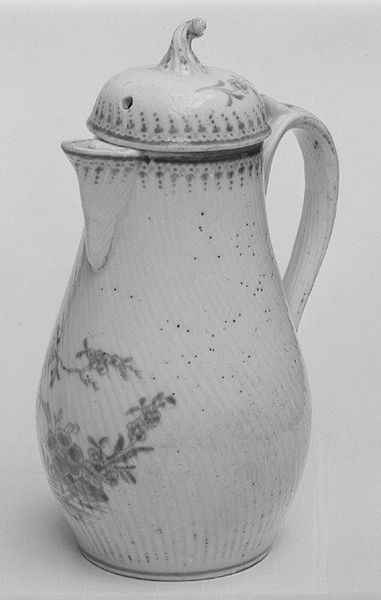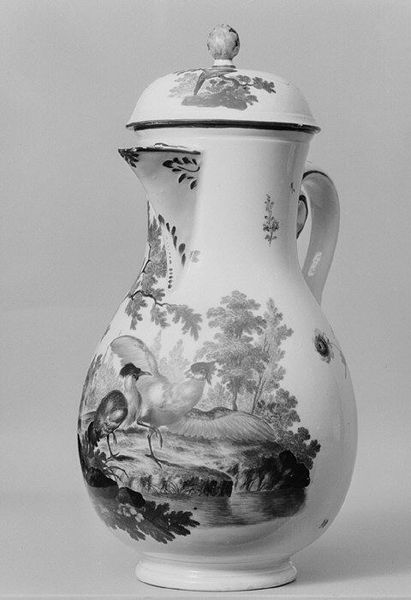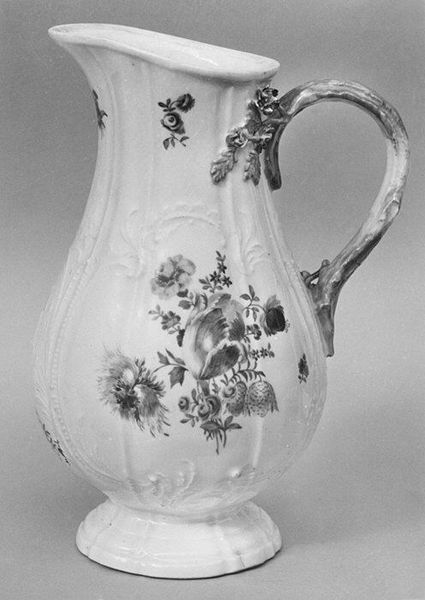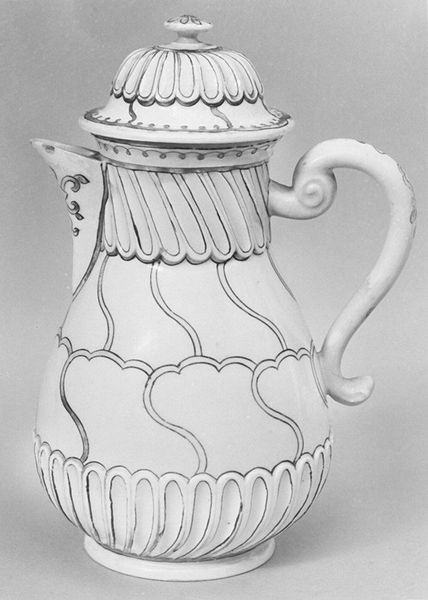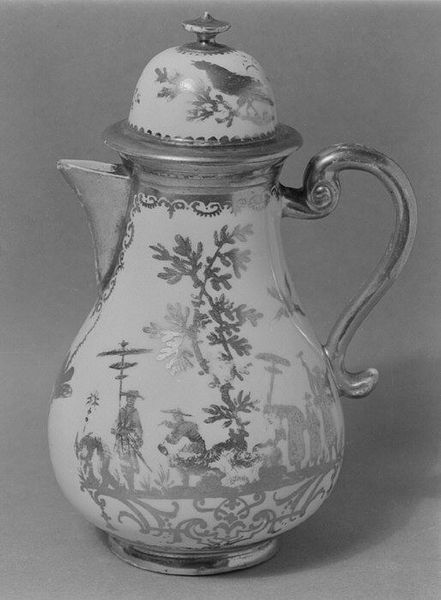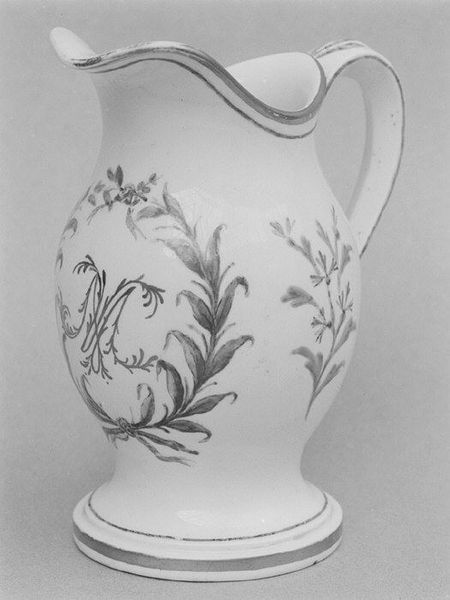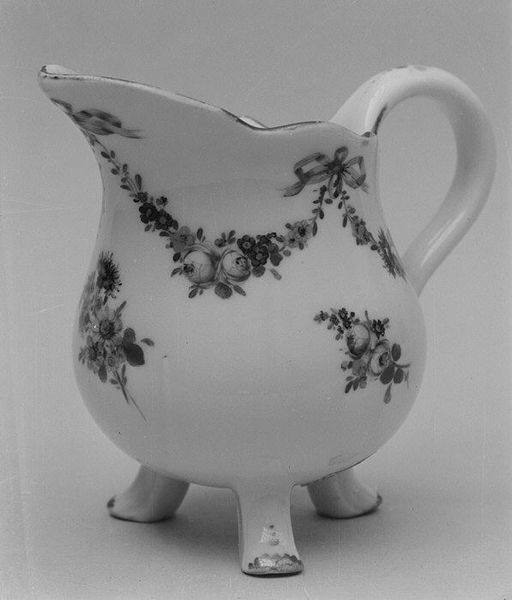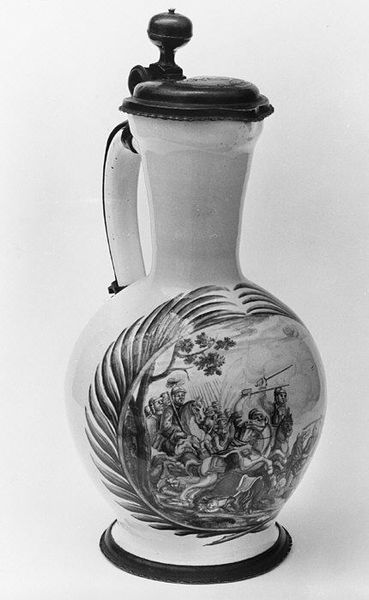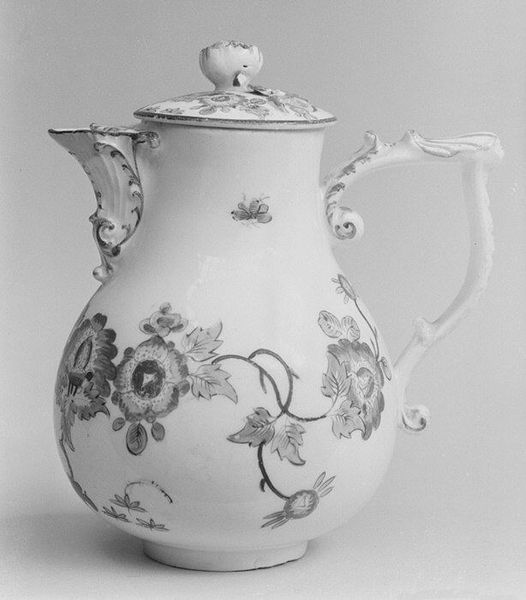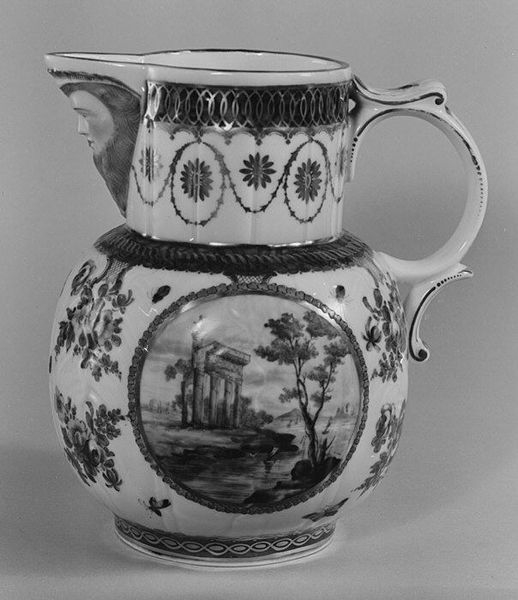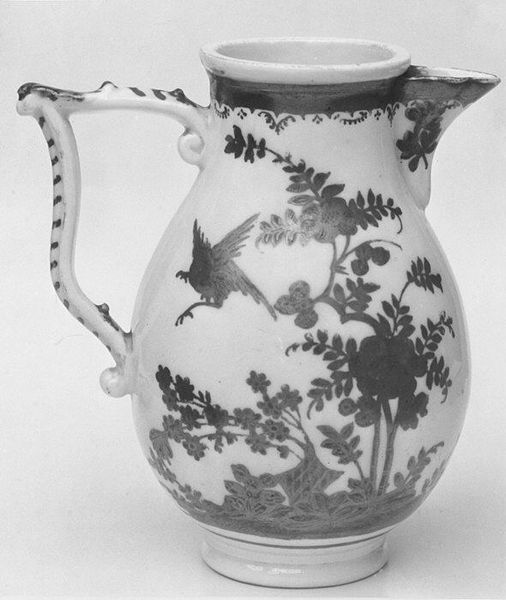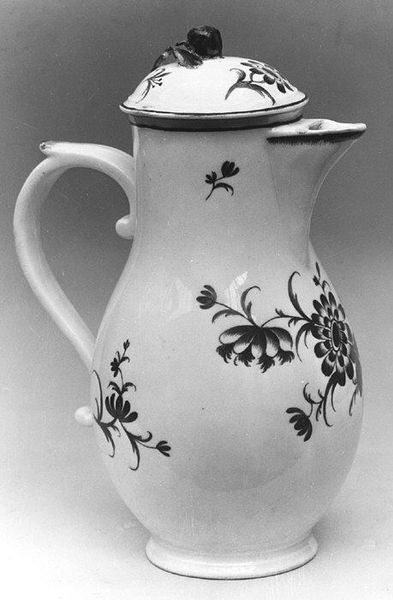
Dimensions: Height: 9 1/2 in. (24.1 cm)
Copyright: Public Domain
Curator: It strikes me immediately – a peculiar mix of austerity and whimsical detail. It feels both grounded and fanciful. Editor: Let's dive into that a bit. This object, a water jug created by Levavasseur between 1783 and 1793, is currently housed at the Metropolitan Museum of Art. Its form adheres loosely to the Rococo style, rendered in decorative ceramic stoneware. What symbolic weight might it hold beyond mere functionality? Curator: Well, water itself, from an iconographic perspective, signifies purification, cleansing, but also potential chaos. Then, observe how the pastoral scene depicts an almost theatrical display of nature, neatly bordered; a desire to contain not just liquid but meaning itself, to structure the emotional resonance. It's as if the era was thirsty for meaning and structure in equal measure. Editor: Structure is key. Think of the French Revolution brewing, bubbling beneath the surface. Could this jug be a status symbol amidst rising egalitarian ideals? The black and white theme, perhaps unintentionally, conveys this restrained opulence of the well-to-do in revolutionary times, which gives rise to some curious tensions... a functional piece flirting with art for art's sake. Curator: Precisely! Even in an object meant for daily use, you find a yearning to elevate it to the realm of aesthetic contemplation. I would like to suggest a hidden narrative embedded in the stylized floral imagery too. Perhaps its very conventionality became subversive. A refusal to fully embrace the changing tide… an insistence on persisting with established systems. Editor: That makes one wonder, what was the role of something like this during social upheaval? Art isn't divorced from those spheres. It's interesting to consider the political dimensions through something so apparently innocuous as a water jug! Thank you. Curator: Indeed. A seemingly humble object holds the complexities of cultural anxiety. A vessel preserving not just water, but the temperament of an era.
Comments
No comments
Be the first to comment and join the conversation on the ultimate creative platform.
